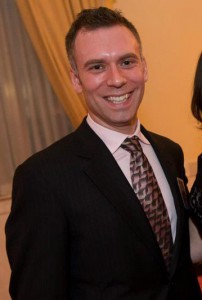Experts Say More Med Students Good News for U.S. Health Care
Fresh data released just last week demonstrates that new student enrollment at medical schools is on the rise nationwide.
The Association of American Medical Colleges (AAMC) announced Thursday that the total number of those who applied to and were accepted into medical school grew by 6.1 percent this year to a record 48,014. This figure beats out
— by 1,049 students — the previous all-time high set in 1996. The AAMC, which represents U.S. hospitals, health systems, Department of Veterans Affairs medical centers, academic societies and 141 accredited U.S. and 17 accredited Canadian medical schools, also found that:
- The number of first-time applicants climbed to 35,727 (5.5 percent increase).
- The number of students enrolled in their first year of medical school went past 20,000 for the first time.
“At a time when the nation faces a shortage of more than 90,000 doctors by the end of the decade and millions are gaining access to health insurance, we are very glad that more students than ever want to become physicians. However, unless Congress lifts the 16-year-old cap on federal support for residency training, we will still face a shortfall of physicians across dozens of specialties,” AAMC President and CEO Darrell G. Kirch, M.D. said in a statement. “Students are doing their part by applying to medical school in record numbers. Medical schools are doing their part by expanding enrollment. Now Congress needs to do its part and act without delay to expand residency training to ensure that everyone who needs a doctor has access to one.”
Record-breaking enrollment is also being seen at colleges of osteopathic medicine, where 20% of medical students are enrolled. Although they make up a smaller number of students, their growth rates increased even faster. In an announcement released Wednesday by the American Association of Colleges of Osteopathic Medicine (AACOM), experts say this trend will help offset the looming primary care crisis that will result from a growing shortfall in the number of doctors.
Enrollment at colleges of osteopathic medicine has almost doubled over the past decade, with the number of students who applied this year hitting 16,454. Other key findings, according to AACOM, show that:
- Osteopathic medical colleges saw an 11.1 percent increase in first-year student enrollment for 2013, bringing total enrollment to 22,054.
- 4,726 new osteopathic physicians graduated this past spring, representing an increase of more than 50% over the number of such graduates 10 years ago.
“Because large numbers of new osteopathic physicians become primary care physicians, often in rural and underserved areas, I’m hopeful that the osteopathic medical profession can help the nation avoid a primary care crisis and help alleviate growing physician shortages,” Stephen C. Shannon, DO, MPH, President and CEO of AACOM, said in a statement. “Interest in osteopathic medical education is at an all-time high.”
Primary care physicians are expected to be hit harder than any other specialty, with a projected shortage of about 50,000 by 2025.
So what exactly is osteopathic medicine and osteopathic physicians (DOs)? According to AACOM, which represents the nation’s 30 colleges of osteopathic medicine at 40 locations in 28 states, DOs offer a comprehensive, holistic approach to medical care.
One in five medical students are now enrolled in osteopathic medical schools, and this percentage will grow even more as new campuses open and colleges continue to expand to keep pace with more students.
Now it’s your turn. What are potential advantages and disadvantages of more medical school graduates – to cost, care and access? Will the rise in new enrollment be enough to offset expected physician shortages? Tell us what you think.



















